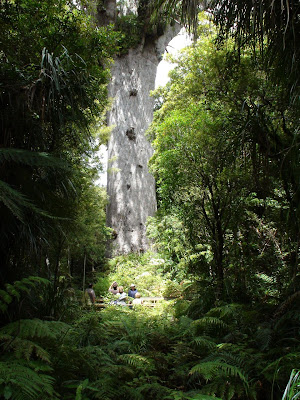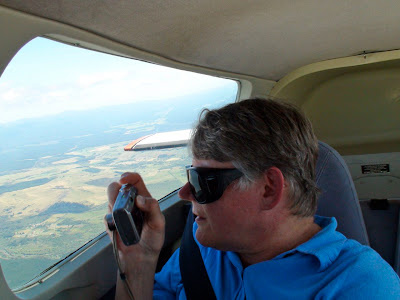Thursday, January 14, 2010 Piha, New Zealand
For the past 7 days we have been staying at a lodge in the remote beachside village of Piha, about 30 km west of Auckland. The beach is well-known in New Zealand for several reasons. It is on the northwest coast, where the ocean is known as the Tasman Sea. The shelf and coastline are such that it gets great surf, and is a favorite among the international surfing set. In fact, from Jan 20-26 this tiny community is hosting the International Junior Surfboarding Competition, and they are expecting 20,000 visitors. I don't have a clue where they think all those cars are going to park! Anyway, the beach sand is black because of the predominance of some iron mineral eroded from the volcanic rocks in the hills above. And, it is the story location of a popular New Zealand TV show, sort of the equivalent of Babewatch in the US.


There is only a single road out to Piha, and the last 14 km are a series of switchbacks. As we have found to be characteristic of many NZ roads, it is a single lane road painted to look like a two lane road. There are no shoulders. And the locals who know the roads drive like maniacs on them, and grow demonstratively impatient following a retired yank on holiday. So Tyler was pulling over at every sufficiently wide spot in the road to let the honkers fly by.
The village of Piha has one small store - a few groceries, a few prepared foods (wrapped sandwiches, etc), some souvenirs, and little else. It has one cafe which serves breakfast and lunch, and closes at 4:00 pm. It was very good - the cook prepared some very imaginative, tasty, and nicely presented dishes. Supper was available at the Surf Club, more fully known as the Piha Surf Lifesaving Club, a venerable institution right on the beach. Its menu was pretty basic, and pretty much the same every night, but they seem to do a healthy business.
Here is a lovely rainbow that graced us one evening, looking inland from the beach.
There actually are two other clubs in town, either of which will serve tourists if they're serving at all. The Piha Bowling Club refers to outdoor lawn bowling, not the bowling-alley-cum-pizza type known in the US. The other club is the RSA, Returned Soldiers Association, kind of a VFW from the first world war.
Just a few hundred meters from our lodge was a trailhead to Keri Keri falls.
We spent Monday and Tuesday, Jan 11-12, back in Auckland. We were able to get tickets to the first NZ concert of Rodrigo and Gabrielle, a guitar duet whose music our son Paul first introduced us to. Their style is hard to categorize, but they might go along with Flamenco With Heavy Metal Influence. Rodrigo is the notes man and Gabrielle is the percussion section. Rodrigo plays all the notes on his guitar, and he plays them very fast and very well. Gabrielle has developed a unique repertoire of percussive sounds on her guitar - both play acoustic guitars with electronic pickups - all the way from big thumpy bass drum to little galloping finger embellishments. If you just hear them on one of their two CDs you would swear that there must be a drummer in there somewhere, but no, I assure you it was just Gabrielle and her guitar.
We stayed in Auckland Monday night and then went out to Waiheke Island on Tuesday. Here is a picture of a cove on the island.
We had a great dinner at the Mud Brick Winery restaurant, and then followed a marked track through the bush back to the ferry. We finally got back to Piha around midnight.
Tyler got up at 4:30 am Thursday morning, went down to the beach with his camera, and sat there for two hours taking a series of still photos to string together as a time-lapse movie of the sunrise over the landmark Lion Rock. Here is one nice shot from that sequence.





























































